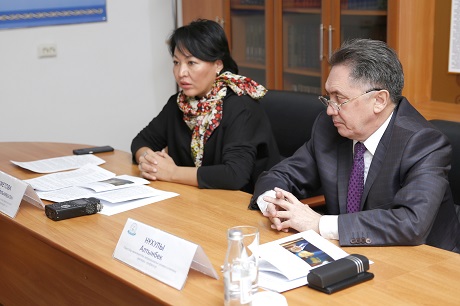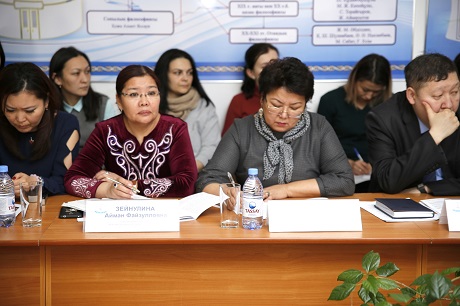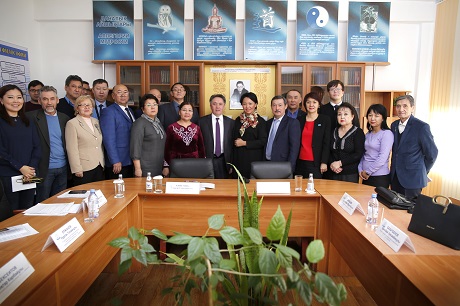An extended discussion of the Article of the Head of State “Seven Facets of the Great Steppe” dated November 21, 2018 was held at S.Toraighyrov Pavlodar State University. The projects considered in it were a continuation of the “Rukhani Zhangyru” program.
In his article, the President pays special attention to determining the place of the Great nomadic culture and its role in world civilization, talking about the achievements that have made Kazakhstan today a strong state: cultural achievements, the ancient metallurgy of the Great Steppe, the Great Names of the Great Steppe, the genesis of the Turkic world and much more.
The scientific community, representatives of universities of the region, experts, historians, political scientists and others took part in the discussion.
In her welcoming speech, Gaukhar Akhmetova, Rector of S.Toraighyrov PSU noted that the “Seven Facets of the Great Steppe” should become the basis for in-depth and detailed study without an ideological cliche, with the evidence base that has been formed for many years by domestic and foreign researchers.
“There are basic worldview categories, like time and space. In nomadic culture, this is a non-linear cyclical perception. It was reflected in the further development of the economy, material culture, poetry, art, and military affairs. And all these main accents are outlined in the article. A new impetus for scientific research has been given for scientists who are engaged in research of the history of the Turks, the Kazakhs, the entire nomadic civilization”, G. Akhmetova said.
The participants noted that the new components of the nationwide program “Rukhani Zhangyru” make it possible not only to recall the rich heritage of Kazakhstan, but also to make it relevant, understandable and in demand in modern conditions.
The director of the joint archaeological research center named after A. Kh. Margulan, candidate of historical sciences Victor Merts spoke about the scientific discoveries and archaeological work carried out by scientists of PSU.
“On the Borla Lake, we explored ancient settlements, where the bones of domestic horses were discovered, by definition of paleozoologists. Now we are waiting for the genetic results of research that will confirm that this is a domestic horse, and it is a thousand years older than the Batay. The approximate date of burial is the middle of the fifth millennium BC, i.e. in the Neolithic era, we had already domesticated a horse”, Victor Karlovich says.
During the discussion, the issue of the work of archives was considered separately. Now for everyone there is a new opportunity - to work with archival documents on open access. In addition, due to the shortage of specialists in this field, a proposal was made to begin training archivists at PSU.










